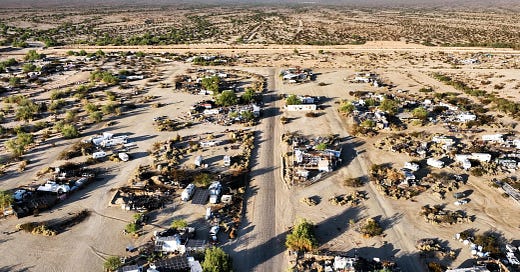The most striking aspect of Slab City located in the Imperial Valley area in the Colorado Desert a sub-region of the larger Sonoran Desert, is that Artistic representations are everywhere. The ad hoc ‘city’ is only a city by description, not holding the features and attributes, of traditional city status but is an alternative living commune of modern Ca…
Keep reading with a 7-day free trial
Subscribe to Charles Chevalier- Newsletter to keep reading this post and get 7 days of free access to the full post archives.


